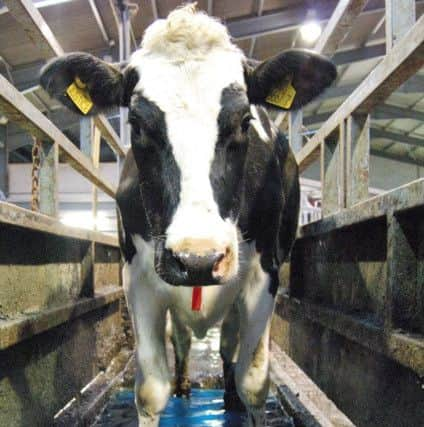DAERA Management Notes: Dairying


The results of the analysis allows you to make informed decisions about applications of fertilisers and slurry. If the correct levels of nutrients are applied yields should be optimised and cost savings may be possible.
A standard soil analysis gives an indication of:
pH.


* Phosphorus index.
* Potassium index.
* Magnesium index.
Soil augers and sample bags are available from your local DAERA office. For meaningful soil analysis it is essential to take a sample that is representative of the area being tested.
Therefore:
Advertisement
Hide AdAdvertisement
Hide Ad* Always use a corer when taking samples. Never use a spade or lift a handful of soil from a ploughed field as a poor sample is worse than none at all.
* Take cores down to 75 mm for grassland and 150 mm for arable.
* Each sample should not represent more than four hectares. Divide large fields, noting and sampling each area separately.
* Take cores from the field by crossing it in a ‘W’ pattern.
Advertisement
Hide AdAdvertisement
Hide Ad* Take 20 cores from the field, bulk them together, mix and put into the labelled sample bag.
* Don’t sample near water troughs, gates, headlands, trees, dung or urine patches or areas where stock shelter.
* Don’t put cores from different soil types together in a sample.
Getting the cow back in calf
Breeding is well underway. All cows that are six weeks calved should have displayed a heat and are past their ‘voluntary waiting period’. Heats seen after this should be bred and a record of the service made. Assess breeding efficiency by working out the submission rate for the last three weeks. How many cows that had completed their ‘voluntary waiting period’ three weeks ago have been served? This answers the question of how many cows that were eligible to be served in the last three weeks were served. It should be all of them! If not, there is a problem with heat detection on your farm.
Tackling digital dermatitis
Advertisement
Hide AdAdvertisement
Hide AdIs digital dermatitis a problem on your farm? An AFBI farm survey on lameness found that 45 of the 57 herds surveyed had digital dermatitis. Routine foot bathing is the most practical method of control, but to be successful it must be carried out effectively. Without regular foot bathing the incidence of digital dermatitis will increase weekly during the winter.
Ideally provide a double foot bath, a bath to wash feet, followed by a treatment bath. The wash bath is needed to remove dung which reduces the effectiveness of the chemical in the treatment bath. If there is not enough space to fit in both baths the cows feet can be washed with a hose before leaving the parlour on the way out to the foot bath. To allow time for good penetration of the chemical the cow needs to take at least three strides through the treatment bath. It must therefore be at least
3 m long. Fill the bath to a depth of 10 cm to ensure the foot is covered up to the top of the hoof.
The frequency of treatment depends on the incidence of infection in the herd. The minimum regime is to bath after four consecutive milkings each week.
January jobs checklist
Advertisement
Hide AdAdvertisement
Hide AdCalibrate parlour and out of parlour feeders to ensure accurate feeding.
Take soil samples for analysis to allow decisions to be made on lime and nutrient requirements for the season ahead.
Submit all slurry exports for 2018 online to NIEA by January 31st 2019.